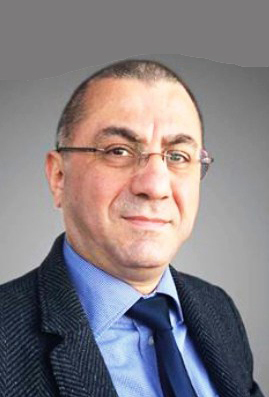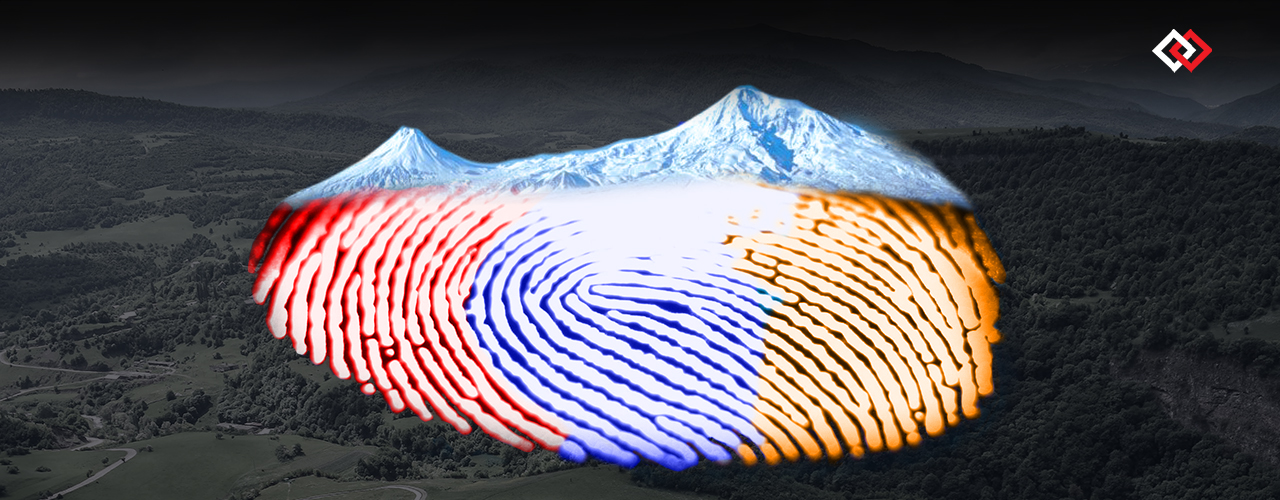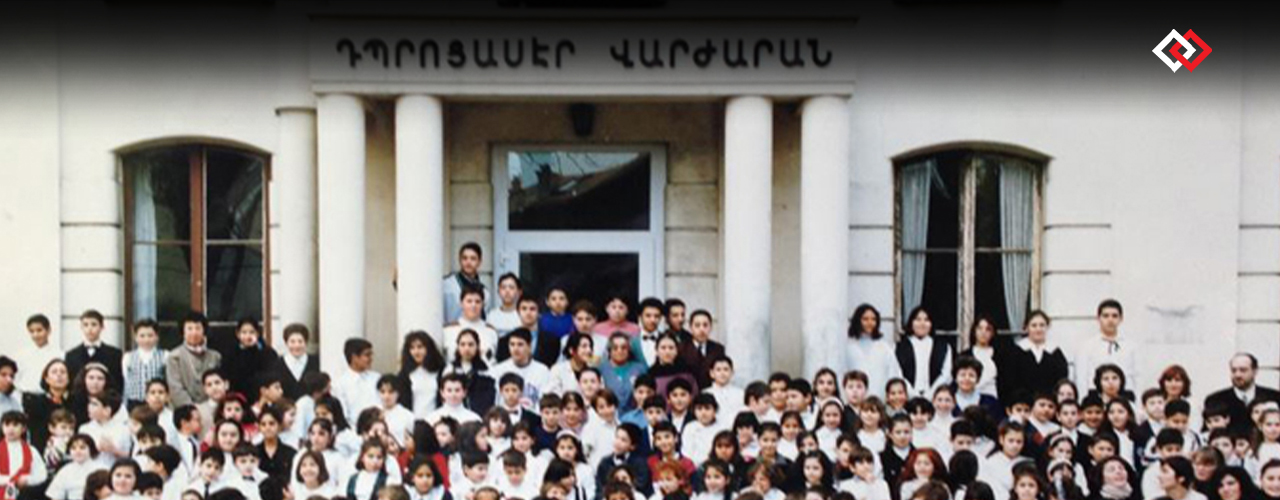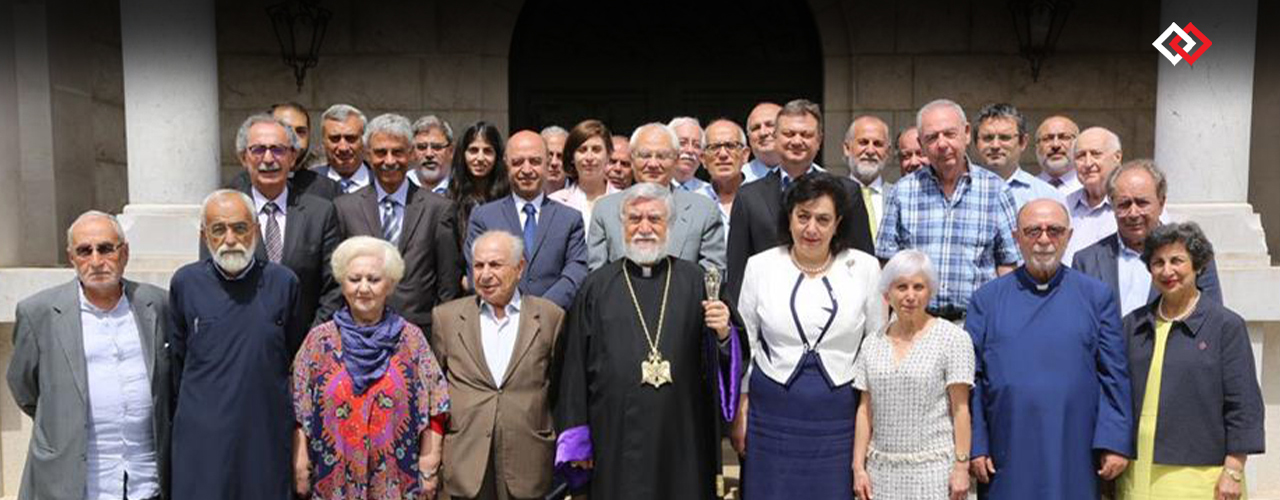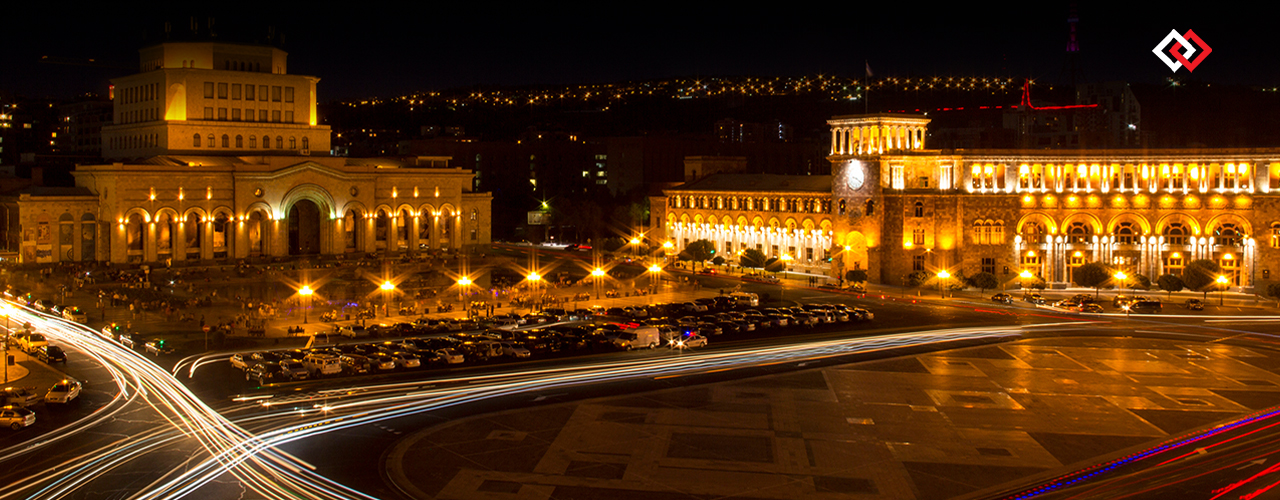The debate on “Armenian identity” has a long history and is an ever-evolving discourse, especially in the Diaspora. In the last 100 years since 1915, along with efforts to build communities in dispersion, there have been hierarchies of identity and canonical approaches to definitions of “Armenian,” especially as articulated, rationalized and promoted by elites, institutions and political parties in the Diaspora and in Armenia.[1] This essay is not a study of identity per se, but about one of the aspects of identity – the “Armenian” bit of it.
Definitions of ethnicity encompass “all ascriptively-based group boundaries, including based upon race, religion, language, and/or region.” Generally, scholars argue that “characteristics such as religion, language and region are viewed as ascriptive rather than cultural because they are typically defined for purposes of ethnicity,” which refer to ethnic lineage and ancestral customs rather than current practices or locality of a person or a group. Therefore, “while individuals may adopt new languages, lapse or change religions, or alter their places of residence, it is much more difficult for them to change their ethnicity, even when ethnicity is based upon such characteristics.”[2]
Contemporary scholarship and theories of ethnicity have shown that “ethnic boundaries” — patterns of social interaction that reinforce self-identification of a group and outsiders’ confirmation of the group’s distinctions — are socially constructed. They are “not predetermined by biology or customs, but malleable and responsive to changes in the surrounding social environment.”[3] As such, ethnic boundaries are social mediums through which members associate with the larger group. Culture and geography are the two most emphasized elements in most of the literature on ethnic identity research. The cultural element is generally “viewed as a social construction involving insiders and outsiders mutually acknowledging group differences in cultural beliefs and practices.” The other is employed to define the geographic origin of ethnic groups and, as such, “social origins that are foreign to the host society.” The geographic element has a largely objective basis, but is also partly subjective.[4]
In the Armenian case particularly, on one hand, there are a host of assumptions on identity and “politically correct” definitions, expectations and interpretations of “who is an Armenian.” On the other, new self-defined and actualized “Armenian identities” are prevalent among post-genocide third and fourth generation Armenians spread around the world. These include, for example, not only hyphenated Armenians (American-Armenian, Lebanese-Armenian, Russian-Armenian, etc.), but also percentile-Armenians (half, quarter, 1/8 Armenian, etc.) and, recently, the more openly discussed category of “Islamized Armenian” identity.
In short, identity is not a fixed notion; it is an evolving concept depending on the social, political, and cultural environment, among other aspects, in which Armenians find themselves. The case of the Armenian communities in the Middle East provides a glimpse of the fact that identity construction, preservation and extension are not only a matter of internal group self-definition, externalization and internalization. In the Middle East, identity is also imposed from a variety of sources that include state and social structures, political processes and religious-cultural conditions. On one hand, identity markers for both the majority host society and the minority communities are state-defined, socially constructed and objectified. On the other, what might be termed the ‘soft othering’ of Christians and other non-Muslim groups by state and religious discourse reinforces the ‘differences’ and ‘incompatibilities’ of the ‘others’ in the mind of the larger society.
Generally Arab states impose, for instance, a national curriculum on Armenian or minority schools and draw socio-political (and legal) boundaries around non-Muslim communities. The state grants citizenship and a passport to an ethnic or religious ‘other’, yet limits or bans careers in high level civil service for minorities. The imposition of ethnic-religious identity is also systemic, overriding individual choice. For example, should an Armenian person declare him/herself to be an atheist or is not a member of any church — and does not speak the language — in legal records that person would still be classified or labelled by the State and its institutions as an ‘Armenian Christian.’ As a member of a non-Muslim group, there is virtually no choice except to be identified by one’s ‘birth group’ or ethno-religious affiliation. In other words, the person always remains as the ‘other’ vis-à-vis the dominant ethno-religious group, with its attendant implications.
There are intergroup influences on identity construction as well. Referring to the post-genocide first generation Armenians growing up in the Middle East, Yervant Pamboukian, a leading intellectual, teacher and former editor of Aztag newspaper in Beirut, said: “We lived our childhood in a period when we constantly heard about the sufferings and persecution” that his parents’ generation had been subjected to. “A great weight was put on us, to secure the rebirth of the nation. It gave us strength as the nation was going to be reconstructed by the children of the survivors of the Genocide, the generation of those whose lives were worn out in the orphanages.”[5]
In the 21st century, the perceptual and functional understanding of identity is changing, especially for an ever mobile and globalized Armenian Diaspora. Here, it is important to make a conceptual distinction between “Armenian identity” — the ascriptive aspect described above — and “Armenianness” — the cultural aspect — which at times are used interchangeably. One could compare Armenian identity to an “ethnic passport,” which one possesses to be identified with a group or a country; it is granted, acquired or self-claimed. However, Armenianness is what one does with that ethnic passport, how far and deep one travels into the “Armenian world” or into a world made of “things Armenian” — that is, the process by which one finds venues, opportunities, causes or reasons to actualize the wishes, desires, feelings, and thinking that are driven by one’s sense of identity. Put in another way, identity is the structure (the hardware), Armenianness is the agency (the software). While all Armenians who are or claim to be Armenians are fully Armenian, some Armenians choose to “travel” or explore more than others into the “Armenian world.” As such, Armenian identity “cannot be described exhaustively” and “in its totality,” like Foucault’s concept of “archive of a society, a culture, or a civilization,” — that is, the systems of enunciability, functioning, formation and transformation of events or things.[6]
The distinctions between various types of Armenianness are not absolute, for instance, between traditional and symbolic Armenianness, as Anny Bakalian, in her seminal study of Armenian Americans, suggests.[7] However, there are differences in perceptions, emphasis and expectations. The traditionalists advocate that speaking Armenian and being immersed in ethnic subculture are essential preconditions of “being Armenian.” Conventionally, the Church, political parties, voluntary associations and other collective structures have defined the structural parameters of Armenian identity and have advocated an essentialist form of collective expressions of Armenianness.[8] In this thinking, Armenian identity is an ascribed status, that is, if one is born of Armenian parentage or has “Armenian blood,” they are automatically considered a member of the larger Armenian nation. In this traditional perception of identity, the idea of choice is not taken into consideration — an aspect of modern life so prevalent among and significant for the newer generations of Armenians.
Between the traditional and symbolic views, there are yet other perceptual varieties which define Armenianness through a set of qualities rather than just origin. A good example of this is the “definition” that Peter Balakian’s mother provides, when he describes the type of woman she expected him to go out with. “A woman had to qualify by being jarbig, which meant she had to have energy, wit, vitality. She had to be achgapatz, open-eyed, so that nothing could get past her, for she was keeper of the gate, the protector of things sacred: family and husband. If a woman wasn’t jarbig and achgapatz – clearly my mother thought she possessed these qualities in abundance – she wasn’t worthy, she wasn’t in the existential sense, ‘Armenian’.”[9]
In the 21st century, Armenian identity is a matter of choice for the vast majority of the third and fourth post-genocide generation of Armenians in the Diaspora, who participate in community life voluntarily rather than as a matter of obligation.[10] This choice is expressed through a sense of pride in one’s heritage, feelings toward people and things Armenian, and involvement with other Armenians. For the new generations, as Bakalian explains, Armenianness is “voluntary, conscious, rationalistic, segmental, transitory, sporadic, that is, symbolic. Sentiment and convenience become the modus vivendi for maintenance of almost all aspects of Armenianness. Feelings run high, but when it comes to behavioural participation, convenience is the key.”[11] Symbolic Armenianness is more to do with emotions than genetic origins. Seen in its positive dimension, it provides valuable psychological function in today’s increasingly individualistic and highly mechanised world. It provides a sense of rootedness and belonging. Indeed, practicing one’s Armenianness is not dependent only on participation in traditional community life, but there are myriad of other choices in today’s ultra-connected world where symbolic ethnicity could be lived or experienced.
In the past, the elites and institutions had large roles of influence and possessed authority in the discourse on identity. For instance, in the post WWII period, Armenian political parties had, arguably, a dominant position in community life in the Diaspora. Their ideological discourse was disseminated through party newspapers, schools, clubs and youth programs they ran. Although positions were sharply contested by rival parties, Khachig Tölölyan explains that “it was enthusiastically celebrated by [their] adherents and profoundly resented by [their] opponents, and the struggle served as the generator of polemics in which notions of diaspora were implicitly and explicitly elaborated.”[12] Indeed, in the ideological discourse of one of the largest parties, the ARF, the Diaspora was a “temporary and transitory” condition. The Party preached an “eventual return to the homeland” and “declared [it] essential and inevitable.” Community institutions, like the ARF, had a strong influence on identity construction and, as Tölölyan describes, “even on the poems we would memorize, the songs we sang, and the books and newspapers we read.”[13]
In sharp contrast, the 21st century is increasingly becoming a “world of self-reference” — that is, a world where trust in organizations, institutions or governments are increasingly declining and one’s own position and beliefs are considered more relevant than other sources.[14] The conventional sources of institutional authority and influence, therefore of trust, are not taken for granted anymore. Top-down traditional influence on discourse and identity is in a process of reversal and is becoming more horizontal than vertical.[15]
Institutions that are relevant to identity seem to be losing effectiveness under the weight of the enormous complexities of these changes. In this age of social media and rapid technological advancements, people no longer rely “on a few well-informed opinion shapers,” such as newspaper columnists, political actors, party or church leaders, but increasingly use, for instance, social media, peer-driven media, search engines, “where content is shaped by the search preferences of other users, or directly curated by friends or family.” Studies show that “peer voices today are more powerful than the opinion of traditional authority figures.”[16] This is a world where “a person like yourself” is as credible as “an academic expert” and far more credible than, say, a community leader or government official. For sure, in the 21st century, there are more “informed Armenians” than “masses of followers.” Armenians in their 20s and 30s are highly educated, socially and professionally well-connected, news and media savvy, and economically comfortable.[17]
What is “Armenian” about Armenian Identity in the 21st century?
I shall try to explore this rather conceptually risky question by looking at the question of what is “Armenian” about Armenian culture. My approach is informed by the hypothesis that, in the Diaspora, culture — in the widest sense — serves the role of land for a country, even as it includes the imagined or real homeland in it. Այսինքն՝ անհող ժողովուրդի մը հողը իր մշակոյթն է (that is, culture is the land of a landless people).
From an anthropological/sociological perspective, culture could be defined as everything learned, actions, beliefs, behaviours that are maintained and transmitted through symbols and objects, not genes. Culture denotes all the knowledge, technologies, values, customs, behaviours and characteristics common to the members of a particular group or society. Through culture, groups define themselves, conform to society’s shared values, and contribute to society. Organizations and social institutions, such as the family, education, religion, work, so on, play important roles as they provide clusters of rules and cultural meanings associated with specific social activities.
So, what is “Armenian” about Armenian culture?
To answer this question, one could look into the various domains of culture: literature, music, architecture and visual arts to see what it is in these cultural traits or domains that make them “Armenian.”
In this short essay, I shall take only one area and provide a sociological reading of Armenian folk music as observed and analyzed by Komitas (Father Komitas Soghomonian, 1869-1936), a priest in the Armenian Church, who was an ethno-musicologist, singer, choir director, music teacher and composer. Komitas spent years in villages and towns collecting Armenian songs and dance music and attempted to penetrate into the depth of this significant cultural domain. I chose to focus on folk music because this genre is most relevant to the problematics of cultural production and identity in the Diaspora.
Komitas explains that, in general, Armenian folk music could be divided into two branches: Eastern and Western Armenia. “Western melodies are broad and complex, rich and serious, bright and brisk; Eastern melodies are compact and simple, unsophisticated and light, prosaic and peaceful.”[18] Indeed, one could make similar observations on other cultural aspects of East and West.
More important for the discussion here, the music of the “common people,” or as Komitas comments, the peasants’ music of both Western and Eastern Armenia “is extraordinarily rich and complex and condenses the entire inner and outer life of the Armenian. Each song is the genuine echo of his rustic heart and the clear mirror of his soul. Each song depicts a broad slice of life confined within a small frame.”
He identifies six genres of folk music: Peasant, Ritual, Epic, Ballads, Ditties, and Antounis. These songs related to virtually all aspects of life. They reflected the social-cultural context of peasants and enforced connections with everyday life, rituals and traditions. Singing, as Komitas puts it, “is routine” for the peasant “as bread and water.” He explains the significance:
Villagers adhere strictly to the prescribed use of the different types of songs. Each song must be learned or sung in its proper place and time. They will sing work songs during work, and domestic songs while at home, and so forth. No villager will sing a threshing [աղալ] song when at home, for the place to sing the threshing song is on the threshing floor. Therefore, villagers will most often refuse to sing songs that a non-peasant may request, for it is strange to them to be asked to sing songs when neither the time nor the place is appropriate. Each song is tied to the moment in village life and is related to just that moment. The peasant cannot comprehend, create, or utilize a song that is removed from that moment.[19]
In modern times, new technologies, e.g. CDs, DVDs, MP3 have influenced and continue to impact music making and performance, and have altered the social (sociological) dimension of music. The idea of live music has been altered or modified by the reality of recorded music; even at some “live” concerts artists sing with playback, where voice is live, but music is recorded.
In the 21st century, the 20-30 years olds — unlike the ones described by Komitas — do not sing at functions anymore; they listen to music and dance to recorded music; the song does not have anything to do with the occasion or the gathering, or any particular relevance to aspects of daily living, but is rhythmically relevant to the dance. Rhythm or tempo is more important than the words or meaning of the song itself. Thus, today music listened to (or used) during social gatherings or “clubbing” is not expressions of daily life, or community rituals, but reproduced and reshaped, mixed and matched to consumer needs and expectations. In the past, as Komitas notes, “the peasant gives more attention to the words of the song than to the tune and, not surprisingly, the texts of the songs live longer than their melodies.”[20] Today it is the opposite in most cases. One amusing example of this is when female singers performing a Sayat Nova serenade intended for a female flame, sing: “Your lips are candy sugar” («Պռոշնիրըդ նաբաթ ունիս»).
Komitas draws a delicately nuanced and elaborate definition of what “the spirit of national folk song” is:
The spirit of national music is the aggregate of patterns that a nation instinctively employs in singing. It is the particular movement of pitch and tone, it is the relationship between those tones and the phonemes of the language (grammatical expressive accent, musical accent). The spirit of national music is the rational articulation of the text and the corresponding improvised melody, which is the articulation of the heart. [It] is the choice of tone color (nasal, guttural, or chesty sounds). [It] is the genres of songs, and so on… All things which have an immediate association with a song, provided that they are immediate, non-artificial, intrinsic reflections of the internal and external life of the folk, express the spirit of national music.[21]
Clearly, the relationship of word/text to melody, to rituals/occasions, memory and creativity is significant. In the 21st century, one would ask what are the connections, the relationships, the occasions in diasporic life that would make a piece of music, “Armenian music?” Is it the composer or the musician who makes the song “Armenian” or is it the “connections” a piece of music makes that define the song? These are questions that, I believe, need further exploration.[22]
Music, as observed by Komitas in the life of the villagers, is one of the domains of culture that contains some of “the codes” as it were, of Armenianness. While in the past, communal singing was part of living out one’s daily life as an Armenian, today this medium has lost its functional meaning in the lives of new generations of Armenians dispersed globally. If for Armenian peasants, culture in the form of music and dance was as natural and organic as going about their daily chores and life, in the 21st century Diaspora it is a matter of planning, choosing, adapting and performing. In short, beyond being and feeling Armenian, it requires thinking.
In conclusion, even as it is impossible to describe exhaustively and in its totality what “Armenian” is in Armenian identity, I suggest, it is the connections, the relationships, the occasions in diasporic life in the 21st century that makes a piece of music or a painting, or literature or a bowl of harissa “Armenian.” It is the memory, thought and message that a cultural object or creation represents that makes it “Armenian” by connecting it to a meaning system that is larger than an individual’s personal world.
Over two decades ago, Anny Bakalian suggested that the generational changes in the Diaspora indicated that Armenians are moving “from being to feeling Armenian.” I would add that, in the 21st century, what is “Armenian” in Armenian identity is what you think Armenian is — as such, one could say the process has moved from feeling to thinking Armenian.
While the dream of an eventual return to the real or imagined homeland might still be dreamed by many, the vast majority of Armenians in the Diaspora will continue to be integrated into their societies, even as Armenia will probably remain to be a source of revitalization of Armenian identity in dispersion.
The realities of the 21st century require a new thinking and understanding of identity from the perspective of the specific places and context where Armenians live rather than on the basis of the rigid binaries of the dominant discourse.
Finally, a broader understanding of “Armenian identity” would benefit from a process of de-ethnicization of identity in order to fully appreciate its Armenianness[23] — that is, rather than essentialist or substantive definition of identity, a more functional and open-ended definition would provide a better catchment for the varieties of Armenian identities in the 21st century.
*I am grateful to Anny Bakalian and Khachig Tölölyan for their valuable feedback on earlier drafts of this essay. A shorter version of this essay was presented at “Critical Approaches to Armenian Identity in the 21st Century: Vulnerability, Resilience, and Transformation,” a conference organized bythe Hrant Dink Foundation and Hamazkayin Armenian Educational and Cultural Society, held in Istanbul, October 7-8, 2016.
———————————
[1] For instance, those who have “poor knowledge of the language” are considered “half Armenian” by some (see “My lovely Yerevan” posted by “Դանօ Հայ” user on Facebook on 30 September 2016https://www.facebook.com/notes/%D5%A4%D5%A1%D5%B6%D6%85-%D5%B0%D5%A1%D5%B5/my-lovely-yerevan/558407687701136 (accessed January 16, 2017); or someone is not considered “100% Armenian” if “his father is not Armenian” (See comments to an article posted by Tatul Hakobyan on Facebook on January 12, 2017 at 9:47am, about chess grandmaster Gary Gasparov, where a Vito Shekunc wrote: “Բայց ոնց ասի հայ եմ, երբ 100% հայ չի։ հայ կլիներ այն դեպքում, երբ հայրը հայ լիներ։ ինքը 50% հայ է։ որ հայ լիներ, այդքան հիմար չեր լինի.” https://www.facebook.com/profile.php?id=100000616638924 (January 16, 2017). Another example is the statement of a young woman living in Armenia with her two brothers, whose father is Diaspora Armenian and mother is black Nigerian, said: “Նիգերիայում մեզ որ տեսնում են, ասում են՝ նիգերիացի չեն, Հայաստանում էլ ասում են՝ հայ չեն;” her mother adds: “Երեխաներս որ գնում են Նիգերիա, իրենց խորթ են զգում, որ գալիս են Հայաստան՝ էլի խորթ են զգում: Բայց մեկ է, ասում են՝ այստեղ [Հայաստանում] ավելի լավ է» (see “Հայը լքել է, նիգերիացին՝ որդեգրել”, Aravot, November 16, 2011, http://www.aravot.am/2011/11/26/285347/ (January 17, 2017). While Charles Aznavour speaks rudimentary Armenian, he admits that he “neither writes nor reads” Armenian and does not know the national anthem of the Republic of Armenia, whose ambassador he is in Switzerland. «Երգիչը խոստովանել է` այն, որ ինքը չգիտի ՀՀ օրհներգն ու չի գրում և կարդում հայերեն, չի խանգարում նրա դիվանագիտական աշխատանքին», http://www.panarmenian.net/arm/news/230758/ (accessed February 1, 2017). For a debate on identity issues in Armenia, see, for example, “Ֆեյսբուքյան ասուլիս- «Հայու գենը»․ խառնամուսնություններ” (“Facebook discussion: “The Armenian gene”, mixed marriages”) Ազատութիւն (Liberty), January 10, 2017, https://youtu.be/GzgD0Y8T98w (January 18, 2018); and «Վտանգված է հայի տեսակը» (“The Armenian kind is endangered”), Ազատութիւն (Liberty), January 17, 2017, https://youtu.be/xbQa2l1Edlc (January 18, 2018). For anecdotal accounts of non-Armenian Lebanese and foreign workers who speak Armenian in Beirut’s Armenian “ghetto” of Bourj Hammoud, see Արմենակ Եղիայեան, «Ծնունդի Հէքեաթներ», ՆորՅառաջ, 16 Յունուար 2018, pp. 5-6.
[2] Sun-Ki Chai, “Predicting Ethnic Boundaries”, European Sociological Review, 21, 4, 2005: 375.
[3] Ibid.
[4] Jimy M. Sanders, “Ethnic Boundaries and Identity in Plural Societies,” Annual Review of Sociology, 28, 2002: 327.
[5] «Իմ Կեանքս Որպէս Զինուորագրեալ Ապրած Եմ». Երուանդ Փամպուքեան. Ազդակ, February 27, 2017. http://www.aztagdaily.com/archives/337548.
[6] Michel Foucault, The Archaeology of Knowledge. New York: Pantheon Books, 1972: 128-131.
[7] Anny Bakalian, Armenian-Americans. From Being to Feeling Armenian (New Brunswick & London: Transaction Publishers, 1993).
[8] See, for example, Հրաոյշ Յակոբեան, «Սրբօրէն Պահենք մեր Մայրենին», Պայքար, 19 Փետր. 2017, 3. Varant Papazian, “Ազգային ինքնութիւն եւ ՀՅ Դաշնակցութիւն” [“National identity and ARF”], Aztag, January 27, 2017, http://www.aztagdaily.com/archives/333871; “Catholicos Aram I: ‘We should learn our lesson and reflect on ourselves’, Mediamax, April 18, 2016, http://www.mediamax.am/en/news/interviews/17882/; Shant Yacoubian, “Հայեացք Մը Հայ Մշակոյթի Ինքնութեան Վրայ” [“A glance on Armenian cultural identity”], Aztag, August 4, 2016, http://www.aztagdaily.com/archives/307732; Yervant Khosrovyan, «Ո՞վ Է Հայը» [“Who is the Armenian?”], Lragir.am 30 October 2010, http://www.lragir.am/index/arm/0/society/view/40244; Tamar Samuelian, «Ո՞վ Է Հայը» [“Who is the Armenian?”] Aztag, 8 September 2015, http://www.aztagdaily.com/archives/258176; «Խմբագրական «ՎԷՄ»-ի. Ո՞վ է Հայը» [Editorial: “VEM”s Who is Armenian”], Aztag, January 13, 2018, http://www.aztagdaily.com/archives/379018 (19 January 2018); AGBU Manoogian-Demirdjian School (Los Angeles) website: “Armenian is our identity, our pride, and our mother language”, http://www.agbumds.org/apps/pages/index.jsp?uREC_ID=74466&type=u&pREC_ID=57169 (July 21, 2017).
[9] Peter Balakian, The Black Dog of Fate. A Memoir. New York: Basic Books, 1997: 125.
[10] Bakalian, Armenian-Americans, 395-419.
[11] Ibid, 431.
[12] Khachig Tölölyan, Redefining Diasporas: Old Approaches, New Identities (London: Armenian Institute, 2002), 49.
[13] Ibid.
[14] Richard Edelman, “An Implosion of Trust”, Edelman.com.au, January 18, 2017, http://www.edelman.com.au/magazine/posts/an-implosion-of-trust/ (July 31, 2017).
[15] “2016 Edelman Trust Barometer – Global Results” “http://www.slideshare.net/EdelmanInsights/2016-edelman-trust-barometer-global-results (20 September 2016).
[16] Tonia Ries, “The Inversion of Influence,” Edelman.com, January 18 2016, http://www.edelman.com/post/inversion-of-influence/ (September 20, 2016).
[17] Cf. Uri Friedman, “Trust in Government Is Collapsing Around the World”, The Atlantic, July 1, 2016 (http://www.theatlantic.com/international/archive/2016/07/trust-institutions-trump-brexit/489554/ (September 20, 2016).
[18] Komitas, Essays and Articles. The Musicological Treatises of Komitas Vardapet. Pasadena, CA, Drazark Press, 2001: 14.
[19] Ibid, 45.
[20] Ibid, 44.
[21] Ibid, 69.
[22] In the domain of art, Dikran Kouymjian asks, for instance, “what is Armenian Art?” and answers with a series of more relevant questions: “Is it art produced in Armenia, either today or in its historical dimensions? Or is it art crafted by those who are Armenian? Would that include half, quarter Armenians, and other fractions, or non-Armenian artists who have an Armenian name through marriage? What about Armenians born or living in other countries who follow the artistic trends in those lands? Or the non-Armenian artists who choose to live in Armenia or among Armenians?” See Dikran Kouymjian, “The Future of Armenian Studies: 2,” Journal of Armenian Studies, 7, 2, Summer 2003: 187.
[23] Cf. Վահէ Օշական, «Մշակութային քաղաքականութիւն», ԵրիտասարդՀայ, Թիւ. 74, 21 Ապրիլ 1973.
This article was originally published in English in EVN
Report, 16.09.2017

